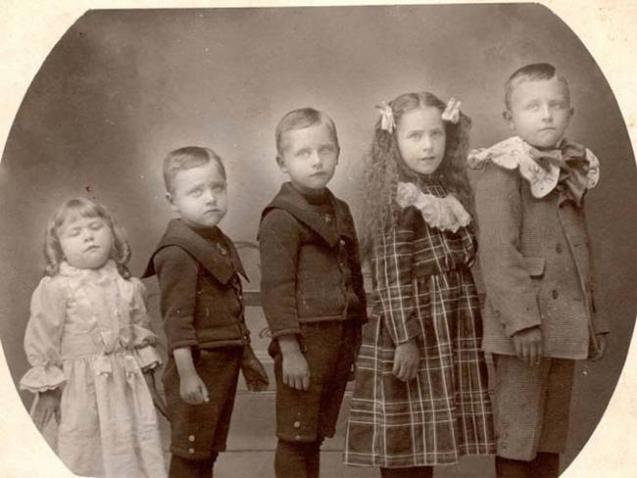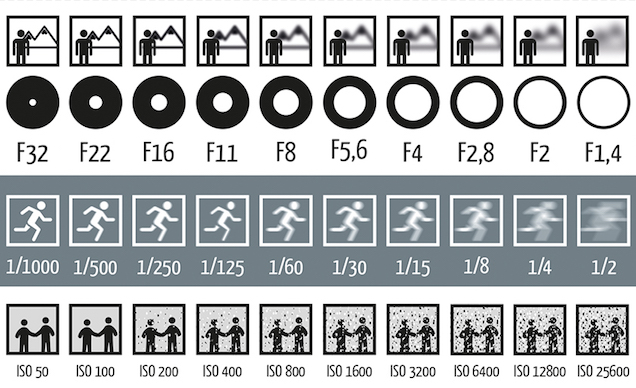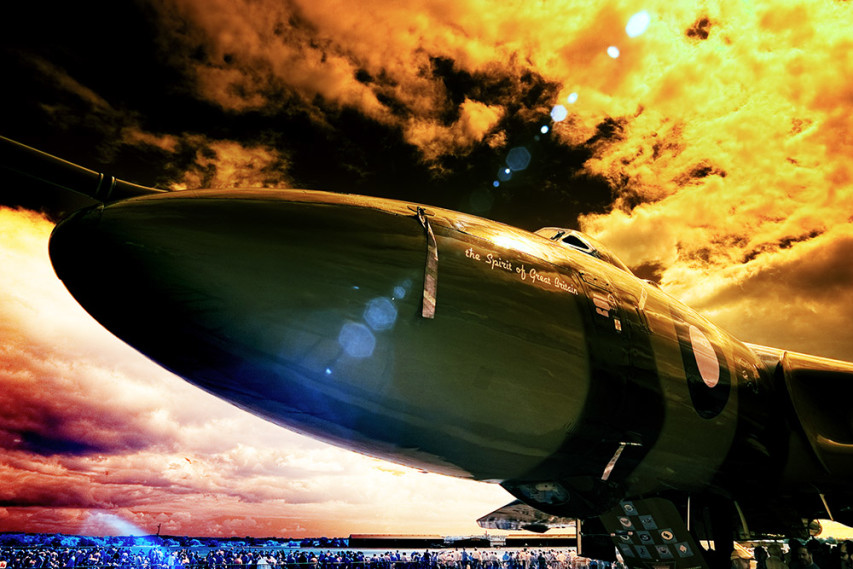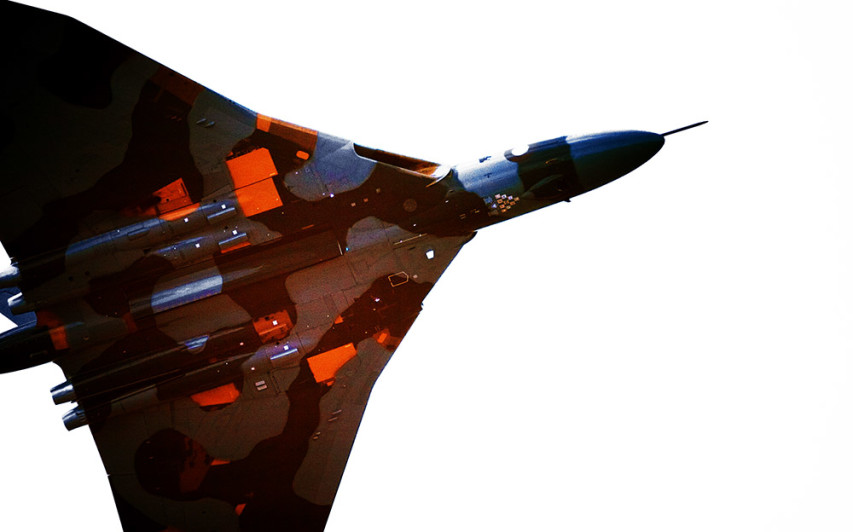5MadMovieMakers
Published on 4 Dec 2017Thomas the Tank Engine goes pro skater and pulls off some sick jumps with his train friends. Filmed with an iPhone SE at 120 frames per second.
December 17, 2017
Thomas Train Stunts
December 13, 2017
Coming way too soon
Charles Stross is a highly dependable source of nightmare fuel in his SF/horror writings. He’s just as disturbing when he points out real developments about to go mainstream:
AI assisted porn video is, it seems, now a thing. For those of you who don’t read the links: you can train off-the-shelf neural networks to recognize faces (or other bits of people and objects) in video clips. You can then use the trained network to edit them, replacing one person in a video with a synthetic version of someone else. In this case, Rule 34 applies: it’s being used to take porn videos and replace the actors with film stars. The software runs on a high-end GPU and takes quite a while — hours to days — to do its stuff, but it’s out there and it’ll probably be available to rent as a cloud service running on obsolescent bitcoin-mining GPU racks in China by the end of next week.
(Obvious first-generation application: workplace/social media sexual harassers just got a whole new toolkit.)
But it’s going to get a whole lot worse.
What I’m not seeing yet is the obvious application of this sort of deep learning to speech synthesis. It’s all very well to fake up a video of David Cameron fucking a goat, but without the bleating and mindless quackspeak it’s pretty obvious that it’s a fake. Being able to train a network to recognize the cadences of our target’s intonation, though, and then to modulate a different speaker’s words so they come out sounding right takes it into a whole new level of plausibility for human viewers, because we give credence to sensory inputs based on how consistent they are with our other senses. We need AI to get the lip-sync right, in other words, before today’s simplistic AI-generated video porn turns really toxic.
(Second generation application: Hitler sums it up, now with fewer subtitles)
There are innocuous uses, of course. It’s a truism of the TV business that the camera adds ten kilograms. And we all know about airbrushing/photoshopping of models on magazine covers and in adverts. We can now automate the video-photoshopping of subjects so that, for example, folks like me don’t look as unattractive in a talking-heads TV interview. Pretty soon everyone you see on film or TV is going to be ‘shopped to look sexier, fitter, and skinnier than is actually natural. It’ll probably be built into your smartphone’s camera processor in a few years, first a “make me look fit in selfies” mode and then a “do the same thing, only in video chat” option.
October 3, 2017
QotD: Generation selfie
There was a whole section of the catalog I picked up in which the models obscured their faces with their phones by taking selfies. Unlike most models these days, who affect a look of unutterable misery (perhaps it is not an affectation, given that they are not allowed to eat and are treated like slaves), the models taking selfies looked very happy, at least in those pictures in which it was possible to discern their facial expression. Perhaps, then, it is in looking at oneself that true happiness lies, at least for some people.
Certainly, at every famous tourist site these days one sees whole troops of people taking pictures of themselves: me and the Mona Lisa, me and the Eiffel Tower, me and Big Ben, me and the Empire State Building, me and Mount Everest. It is the me that counts in these photos, of course; no one’s friends really care about Mount Everest, and even concern for the me is relative. A selfie with Mount Everest is like an alibi when one has been accused of claiming to have been there without having been there; the proof is in one’s phone, although it must be admitted that these days, with an ability to alter photos at will that would have brought joy to Stalin’s heart, anything can be arranged. I read in the memoir of a French model that, having starved mannequins to the size of minus 6, they are fattened up a little afterwards by computer at the printing stage: a remarkable testimony to mankind’s capacity to combine wickedness with stupidity.
The selfie is an example of the new social contract brought about by the social media: You pretend to be interested in me if I pretend to be interested in you. Thus, I agree to look at your selfie at Machu Picchu if you agree to look at mine at Angkor Wat. And this, after all, is as it should be, because it is a long way to go to either of those if no one believes you have been. A classic book is a book that everyone wishes he had read; a wonder of the world is a place at which everyone wishes he had been photographed.
Theodore Dalrymple, “Suit Yourselfie”, Taki’s Magazine, 2017-09-16.
May 4, 2017
Ultimate Camera Bag for Less than $60
Published on 23 Apr 2017
Ultimate Street Photographers Bag –
December 6, 2016
Bowmanville, Ontario from 1984-2016 in Google Timelapse
Description from the Timelapse page:
Timelapse
Timelapse is a global, zoomable video that lets you see how the Earth has changed over the past 32 years. It is made from 33 cloud-free annual mosaics, one for each year from 1984 to 2016, which are made interactively explorable by Carnegie Mellon University CREATE Lab’s Time Machine library, a technology for creating and viewing zoomable and pannable timelapses over space and time.
Using Earth Engine, we combined over 5 million satellite images acquired over the past three decades by 5 different satellites. The majority of the images come from Landsat, a joint USGS/NASA Earth observation program that has observed the Earth since the 1970s. For 2015 and 2016, we combined Landsat 8 imagery with imagery from Sentinel-2A, part of the European Commission and European Space Agency’s Copernicus Earth observation program.
October 25, 2016
The War Photographer – Ernest Brooks I WHO DID WHAT IN WW1?
Published on 24 Oct 2016
Ernest Brooks’ photos from World War 1 have become icons of the entire war and are even recognised today. But his experience as an official war photographer was not always glorious and especially in the beginning he staged photos instead of showing the real horrors of the war. But as the war dragged on, more and more photos captured small moments in this gigantic conflict that showed the humanity behind the numbers.
March 2, 2016
QotD: Pictures of Mohammed
While some Muslims were outraged by a magazine printing cartoon pictures of Muhammad, we have to step back and calmly ask, are pictures of Muhammad really forbidden in Islam? – the answer might surprise you.
Numerous passages in the Qur’an prohibit idolatry, and worshipping statues or pictures, but there is not even single verse in the Qur’an that explicitly or implicitly says not to have any pictures of Muhammad. This bears repeating: There is not a single verse in the Qur’an that prohibits making or having pictures of Muhammad or people or animals or trees. In fact, there are some verses in the Qur’an which mention images in a positive context and which therefore presuppose that some statues or images were approved by God, see the article Muhammad and Images.
However, the vast majority of Muslims are Sunni Muslims, who regard six authorized collections of hadiths as the highest written authority in Islam after the Qur’an. The hadiths are records, often very detailed, of what Muhammad taught and did. We give multiple quotations to show that these teachings are not confined to just one writer/collector, but are spread throughout the different hadith collections.
Where multiple trustworthy hadiths agree, Sunni Muslims will take this as binding. In other words, people today are kicked out of Islam, or even killed based on the hadiths.
Pictures of Muhammad are “not exactly” forbidden in the hadiths either. The hadiths do not single out Muhammad’s picture. Rather, in the hadith we find the prohibition of all pictures of people or animals, which would include pictures from a camera.
For example, Sahih Muslim vol.3 no.5268 (p.1160) says, “Ibn ‘Umar reported Allah’s Messenger (may peace be upon him) having said: Those who paint pictures would be punished on the Day of Resurrection and it would be said to them: Breathe soul into what you have created.”
Notice that the prohibition was not just against idolators who made pictures, or even Muslims who made pictures for other reasons, but for anyone who made pictures.
Sahih Muslim vol.3 no.5271 (p.1161) gives a little more detail: “This hadith has been reported on the authority of Abu Mu’awiya though another chain of transmitters (and the words are): ‘Verily the most grievously tormented people amongst the denizens [inhabitants] of Hell on the Day of Resurrection would be the painters of pictures.”
“Narrated ‘Aisha: Allah’s Apostle said, ‘The painter of these pictures will be punished on the Day of Resurrection, and it will be said to them, Make alive what you have created.’” Bukhari vol.9 book 93 no.646 p.487. no.647 p.487 is the same except it is narrated by Ibn ‘Umar.
No pictures of people or animals according to Bukhari vol.4 book 54 no.447-450 p.297-299.
Conclusion: It is clear that the hadiths prohibit pictures of animals or people, especially in homes. There is no focus on pictures of Muhammad per se. All pictures of people and animals are forbidden. It is a completely general prohibition.
November 21, 2015
This is just creepy – post-mortem photography of the Victorian era
Open Culture on the thankfully brief popularity of post-mortem photography (photos of the recently deceased as if they were merely sleeping):
The 19th century witnessed the birth of photography. And, before too long, Victorian society found important applications for the new medium — like memorializing the dead. A recent post on a Dutch version of National Geographic notes that “Photographing deceased family members just before their burial was enormously popular in certain Victorian circles in Europe and the United States. Although adults were also photographed, it was mainly children who were commemorated in this way. In a period plagued by unprecedented levels of infant mortality, post-mortem pictures often provided the only tangible memory of the deceased child.”

November 19, 2015
“Changing Canada’s copyright term … means two decades where zero historical work enters the public domain”
There may be good parts of the Trans-Pacific Partnership deal, but there are emphatically bad parts, as Jesse Schooff describes in the particular case of the arbitrary extension of copyright in Canada from fifty years to seventy years:
One of the TPP areas of scope which is critical to discuss is the section on copyright. At this point, several notable bloggers* have covered the TPP’s copyright extension provisions in great detail. But what do those provisions mean for you? Let’s bring it down to the ground. For example: folks in my demographic seem to love seeing old-timey photos of their city. Here in Vancouver, exploring our retro-downtown through old photographs of various eras is practically an official pastime.
A quality source of such photo collections is a city’s municipal archives. Traditionally, an archives’ mandate is to store physical objects and documents, which include the physical “analog” photos taken during most of the 20th century. “Great!” someone might say, “the archives can just digitize those photos and put them up on their website, right?”
Let’s ignore the fact that the solution my strawperson proposes has a host of logistical issues attached, not the least of which is the thousands of work-hours required to digitize physical materials. Our focus is copyright — just because the archives has the original, physical photo in their collection doesn’t mean that they own the rights to it.
You have to remember that our newfangled, internet-enabled society is relatively new. When I was a child, if a person wanted to see a historical photo from a city archives, they would actually have to physically GO to said archives and ask an archivist to retrieve the appropriate fonds containing the photo. Journalists and other professionals likely did this regularly, but for the most part, the public at large didn’t usually head down to a municipal building and ask an archivist to search through their collection just to look at a few old photos.
Today, things are much different. If a municipal archives has digitized a significant portion of, say, their collection of 19th and 20th century historical photos, then those photos can be curated online; made accessible to the public at large for everyone to access, learn from, and enjoy!
[…]
Some of the photos, we’ll call them “Group A”, were explicitly released into the public domain by the photographer, so those are okay to use. Another bunch, “Group B”, are photos whose photographer died more than fifty years ago (1965 and before); any copyright on these photos is expired. Some “Group C” photos were commissioned by a businesses, or the rights were specifically sold to a corporation, which means that the archives will have to get permission or pay a fee to make them available online. Most frustrating is the big “Group D”, whose authorship/ownership is sadly ambiguous, for various reasons**. It would be risky for the archives to include the Group D photos in their collection, since they might be violating the copyright of the original author.
So already, knowing and managing the tangle of copyright laws is a huge part of curating these event photos. Hang on, because the TPP is here to make it even worse.
It’s been long-known that the United States is very set on a worldwide-standard copyright term of seventy years from the death of the author. Sadly, such a provision made it into the TPP. Worse still, a release by New Zealand’s government indicates that this change could be retroactive, meaning that those photos in my hypothetical “Group B” would be yanked out of the public domain and put back under copyright.
October 18, 2015
Is that how that meme started? ERMAHGERD!
They’re not quite as common as they once were, but the “ERMAGERD!” girl can still be found in lots of odd corners of the interwebz:
Maggie Goldenberger and her fourth- and fifth-grade pals used to amuse themselves by dressing up in weird clothes, doing crazy stuff to their hair, and posing for polaroids holding funny objects and making weird faces. Years later, Goldenberger uploaded some of her favorites to her Myspace and Facebook accounts, which led to Jeff Davis, who she didn’t know, posting it to Reddit, where a Redditor called Plantlife ganked it and captioned it with “GERSBERMS. MAH FRAVRIT BERKS” — and a meme was born.
The meme was pretty much perfect, a super-awkward tween frozen in a moment of crazy nerding-out over some super-awkward tween books. Combine that with the wordplay in which every vowel sound is “strangulated into ‘er'” and you get a meme that has refused to die, year after year.
Darryn King’s Vanity Fair profile of Goldenberger and history of the ERMAHGERD is a fascinating read. Most interesting to me is the fact that the meme’s premise — that the retainer-wearing, squinch-faced Goosebumps-clutching kid in the photo was a gormless, awkward tween with no idea of how weird she looked — is totally, perfectly wrong. The picture was posed, created by a savvy, funny, witty tween with more smarts than tweens are credited with by an unfair world, who created a genuinely comic character that inspired millions of people to riff on it. Not bad for a nine- or ten-year-old.
August 16, 2015
Farewell to the Vulcan … in infra-red
Ashley Pomeroy attended the Yeovilton Air Day event, one of the last flying events for the last of the Vulcans. She took along her camera to capture some rather interesting images:
Off to the Yeovilton Air Day, with an infrared camera and a bottle of pop. This year the Avro Vulcan retires for the third and final time. Like Lazarus, it was raised from the dead; and like Lazarus it is fated to die again, this time forever.
I used an infrared camera – there is no shortage of Vulcan photographs taken with visible light – in part because the results are dramatic but also because I was curious to see what would happen.
The Vulcan entered service in the 1950s. Its original mission was to incinerate Russians – tens of thousands of them – with our nuclear bombs. In practice this never came to pass, and the only people incinerated by Vulcans were Argentine ground crew, six of them, during the Falklands War of 1982. The Vulcan was retired from service almost immediately afterwards. It remained in flight as a display aircraft until 1993, at which point the expense of keeping a jet bomber in the air became too great.
In this shot, for example, you can see that some of the panels were made of a different material from the rest of the airframe, or perhaps they used a fundamentally different paint.
[…]
What’s it like to see a Vulcan dancing in the sky? In an airshow context the experience is somewhat muted, because regulations prevent it from flying overhead. The pilot can only make long passes parallel with the crowd line plus some wingovers. The Vulcan’s low wing loading gave it superb high-altitude performance – I imagine that the likes of the F-86 or MiG-15 would have found it an incredibly hard gun target – but this doesn’t help at an airshow. Nonetheless, when the pilot gunned the engines it was like being punched in the chest, and I could feel a collective grin from the crowd, although I was too far from the car park to hear the car alarms going off.
July 15, 2015
Modern photography … can you believe your lyin’ eyes?
Michelle Orange on the ways that photography can mislead and even change reality:
It may be that some of the great philosophical work of our time is taking place, hidden and unheralded, in the field of image forensics. Where but under the scrutiny of digital experts who draw a line separating false representations of the world from truthful ones are contemporary questions of perception and reality brought so keenly to bear? Who but these detectives of the real pursue as explicitly — as intricately — our crime wave of the fake, the contrived, the uncanny, the exponential image? With exquisite, singular focus, photo forensics engages the conundrum that photographic technology has tilted toward, steadily but ever more frankly, since its inception over 150 years ago: Does reality have a tipping point?
Dangling from the cliff edge of that question is the World Press Photo competition. In recent years the annual competition, which recognizes images submitted by photojournalists working across the globe, has dissolved into chaos, recrimination and a round of post-mortem soul-searching. Earlier this year, the WPP was forced to disqualify 22 percent of the competition’s finalists after forensics experts determined that certain images had been altered or manipulated beyond the currently accepted industry standard. This almost triples the number of disqualifications from a year earlier, suggesting a certain forward momentum, a trend larger and more fearsome than any set of standards.
Swedish photographer Paul Hansen won the 2013 World Press Photo competition with an image of a Gaza City funeral procession, led through an alley by men bearing the shrouded bodies of two children killed in an Israeli airstrike. Separate from the horror it depicts, with its fish-eye depth of field, stark figuration and stony matte light, the photo meets the eye as unreal. Complaints in this vein led to an investigation of the image, specifically its manipulation of tone — a quality central to photography’s evolving grammar of realism. Somehow both a beautifying tool and, in the right hands, possessed of the very texture of reality (as every Instagram filter maven knows), tone is transformative. For that reason, “excessive toning” is against WPP rules; Hansen said he adjusted tone only to balance uneven light, “in effect to recreate what the eye sees.” Ultimately, Hansen retained his prize: the judges stood behind what they saw, though it would appear their eyes prefer altered images a good portion of the time.
July 13, 2015
Do photographers have any rights left?
I no longer do much in the way of “serious” photography (my digital SLR has been out of service for a couple of years now), but I still occasionally do a bit of cellphone photography when the occasion arises. On the byThom blog, Thom Hogan provides a long (yet not exhaustive) list of things, places, and people who are legally protected from being photographed in various jurisdictions … and it gets worse:
Funny thing is, smartphones are so ubiquitous and so small, many of those bans just aren’t enforceable against them in their natural state (e.g., without selfie stick), especially if they’re used discriminatingly.
I’m all for privacy, but privacy doesn’t exist in public spaces as far as I’m concerned. Indeed, I’d argue that even in private spaces (malls, for example), that if you’re open for and soliciting business to the public, you’re a public space. As for Copyright, placing artwork in open public spaces (e.g. Architecture) probably ought to convey some sort of Fair Use right to the public, though in Europe we’re seeing just the opposite start to happen. FWIW, I no longer visit and thus don’t photograph in two countries because of national laws regarding photography. Be careful what you wish for, Mr. Bureaucracy; laws often have unintended consequences. As in reducing my interest in visiting your country.
About half of this site’s readers actively practice some form of travel photography, either during vacations or while traveling for business. Note how many of the restrictions on photography start to apply against those that are traveling (locally or farther afield). It’s always easy to impose laws on people who don’t vote for you. it’s why rental car and hotel room taxes are so high, after all.
What prompted this article, though, wasn’t any of the latest photography ban talk, though. Here in Pennsylvania we have fairly restrictive regulations on “recording” another person (e.g. conversations, phone calls, meetings, etc.). In some states, it only takes one party to consent for a recording to be legal. Here in Pennsylvania it takes all parties to consent to being recorded.
H/T to Clive for the link.
July 10, 2015
A new and exciting (if you’re a lawyer) aspect of photography
As a casual photographer, I think very little about taking a photo of a building or landscape visible from the sidewalk or other public place. This casual attitude may become a relic of the past if EU regulators have their way, as Brian Micklethwait explains:
Basically, some EU-ers are talking about making it illegal to profit without permission by taking a photo, in public, of a publicly visible building or work of art, and then posting it on any “profitable” blog or website. The nasty small print being to the effect that the definition of “profitable” is very inclusive. For the time being, it would exclude my personal blog, because my blog has no income of any kind. But does Samizdata get any cash, however dribblesome, from any adverts, “sponsorships”, and so forth? If so, then me placing the above photo of the Shard at Samizdata might, any year now, become illegal, unless Samizdata has filled in a thousand forms begging the owners of the Shard, and for that matter of all the buildings that surround it, to allow this otherwise terrible violation of their property rights, or something.
“Might” because you never really know with the EU. At present this restriction applies in parts of the EU. It seems that a rather careless MEP tried to harmonise things by making the whole of the EU as relaxed about this sort of things as parts of it are now, parts that now include the UK. But, the EU being the EU, other EU-ers immediately responded by saying, no, the way to harmonise things is to make the entire EU more restrictive. Now the MEP who kicked all this off is fighting a defensive battle against the very restriction she provoked. Or, she is grandstanding about nothing, which is very possible.
Being pessimistic about all this, what if the restriction does spread? And how long, then, before the definition of “for profit” is expanded to include everything you do, because if it wasn’t profitable for you, why would you do it? At that point, even my little hobby blog would be in the cross hairs, if I ever dared to take and post further pictures of London’s big buildings.
Some better news for me is that if this scheme proceeds as far as it eventually might, my enormous archive of photographs of people taking photographs will maybe acquire a particular poignancy. It will become a record of a moment in social history, which arrived rather suddenly, and then vanished. Like smoking in public.
May 7, 2015
Understanding photography: aperture, shutter speed, and ISO
At LifeHacker, Thorin Klosowski has a quick visual reminder of how the basic photography concepts of aperture, shutter speed, and ISO setting impact the photo you want to take:







